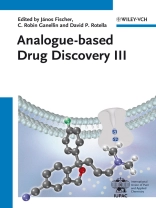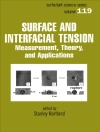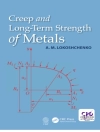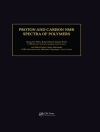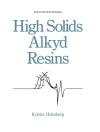Most drugs are analogue drugs. There are no general rules how a new drug can be discovered, nevertheless, there are some observations which help to find a new drug, and also an individual story of a drug discovery can initiate and help new discoveries. Volume III is a continuation of the successful book series with new examples of established and recently introduced drugs.
The major part of the book is written by key inventors either as a case study or a study of an analogue class. With its wide range across a variety of therapeutic fields and chemical classes, this is of interest to virtually every researcher in drug discovery and pharmaceutical chemistry, and — together with the previous volumes — constitutes the first systematic approach to drug analogue development.
Jadual kandungan
PREFACE
PART I: General Aspects
PIONEER AND ANALOGUE DRUGS
Monotarget Drugs
Dual-Acting Drugs
Multitarget Drugs
Summary
COMPETITION IN THE PHARMACEUTICAL DRUG DEVELOPMENT
Introduction
Analogue-Based Drugs: Just Copies?
How Often Does Analogue-Based Activity Occur? Insights from the GPCR Patent Space
METABOLIC STABILITY AND ANALOGUE-BASED DRUG DISCOVERY
Introduction
Metabolism-Guided Drug Design
Indirect Modulation of Metabolism by Fluorine Substitution
Modulation of Low Clearance/Long Half-Life via Metabolism-Guided Design
Tactics to Resolve Metabolism Liabilities Due to Non-CYP Enzymes
Eliminating RM Liabilities in Drug Design
Eliminating Metabolism-Dependent Mutagenicity
Eliminating Mechanism-Based Inactivation of CYP Enzymes
Identification (and Elimination) of Electrophilic Lead Chemical Matter
Mitigating Risks of Idiosyncratic Toxicity via Elimination of RM Formation
Case Studies on Elimination of RM Liability in Drug Discovery
Concluding Remarks
USE OF MACROCYCLES IN DRUG DESIGN EXEMPLIFIED WITH ULIMORELIN, A POTENTIAL GHRELIN AGONIST FOR GASTROINTESTINAL MOTILITY DISORDERS
Introduction
High-Throughput Screening Results and Hit Selection
Macrocycle Structure – Activity Relationships
PK – ADME Considerations
Structural Studies
Preclinical Evaluation
Clinical Results and Current Status
Summary
PART II: Drug Classes
THE DISCOVERY OF ANTICANCER DRUGS TARGETING EPIGENETIC ENZYMES
Epigenetics
DNA Methyltransferases
5-Azacytidine (Azacitidine, Vidaza) and 5-Aza-20-deoxycytidine (Decitabine, Dacogen)
Other Nucleoside DNMT Inhibitors
Preclinical
Zinc-Dependent Histone Deacetylases
Suberoylanilide Hydroxamic Acid (SAHA, Vorinostat, Zolinza)
FK228 (Depsipeptide, Romidepsin, Istodax)
Carboxylic Acid and Benzamide HDAC Inhibitors
Prospects for HDAC Inhibitors
Epigenetic Drugs – A Slow Start but a Bright Future
THIENOPYRIDYL AND DIRECT-ACTING P2Y12 RECEPTOR ANTAGONIST ANTIPLATELET DRUGS
Introduction
Thienopyridines
Direct-Acting P2Y12 Antagonists
cyclopropylamino]-5-(propylthio)-3H-[1, 2, 3]triazolo[4, 5-d]pyrimidin- 3-yl]-5-(2-hydroxyethoxy)cyclopentane-1, 2-diol
Summary
SELECTIVE ESTROGEN RECEPTOR MODULATORS
Introduction
Tamoxifen
Raloxifene
Summary
DISCOVERY OF NONPEPTIDE VASOPRESSIN V2 RECEPTOR ANTAGONISTS
Introduction
Peptide AVP Agonists and Antagonists
Lead Generation Strategies
Lead Generation Strategy-2, V2 Receptor Affinity
Lead Optimization
Reported Nonpeptide Vasopressin V2 Receptor Antagonist Compounds
Conclusions
THE DEVELOPMENT OF CYSTEINYL LEUKOTRIENE RECEPTOR ANTAGONISTS
Introduction
Scope of the Drug Discovery Effort on Leukotriene Modulators
Synthetic Leukotriene Production and Benefits Derived from this Effort
Bioassays and General Drug Discovery Testing Cascade
Development of Antagonists – General Approaches
Discovery of Zafirlukast
Discovery of Montelukast
Discovery of Pranlukast
Comparative Analysis and Crossover Impact
Postmarketing Issues
Conclusions
PART III: Case Studies
THE DISCOVERY OF DABIGATRAN ETEXILATE
Introduction
Dabigatran Design Story
Preclinical Pharmacology Molecular Mechanism of Action of Dabigatran
Clinical Studies and Indications
Summary
THE DISCOVERY OF CITALOPRAM AND ITS REFINEMENT TO ESCITALOPRAM
Introduction
Discovery of Talopram
Discovery of Citalopram
Synthesis and Production of Citalopram
The Pharmacological Profile of Citalopram
Clinical Efficacy of Citalopram
Synthesis and Production of Escitalopram
The Pharmacological Profile of the Citalopram Enantiomers
R-Citalopram’s Surprising Inhibition of Escitalopram
Binding Site(s) for Escitalopram on the Serotonin Transporter
Future Perspectives on the Molecular Basis for Escitalopram?s Interaction with the SERT
Clinical Efficacy of Escitalopram
Conclusions
TAPENTADOL – FROM MORPHINE AND TRAMADOL TO THE DISCOVERY OF TAPENTADOL
Introduction
The Discovery of Tapentadol
The Preclinical and Clinical Profile of Tapentadol
Summary
NOVEL TAXANES: CABAZITA
Mengenai Pengarang
János Fischer is a Senior Research Scientist at Richter Plc., Budapest, Hungary. He received his MSc and Ph D degrees in organic chemistry from the Eotvos University of Budapest under Professor A. Kucsman. Between 1976 and 1978, he was a Humboldt Fellow at the University of Bonn under Professor W. Steglich. He has worked at Richter Plc. since 1981 where he participated in the research and development of leading cardiovascular drugs in Hungary. His main interest is analogue based drug discovery. He is the author of some 100 patents and scientific publications. In 2004, he was elected as a Titular member of the Chemistry and Human Health Division of IUPAC. He received an honorary professorship at the Technical University of Budapest.
C. Robin Ganellin studied Chemistry at London University, receiving a Ph D in 1958 under Professor Michael Dewar, and was a Research Associate at MIT with Arthur Cope in 1960. He then joined Smith Kline & French Laboratories in the UK and was one of the co inventors of the revolutionary drug, cimetidine (also known as Tagamet). In 1986, he was made a Fellow of the Royal Society and appointed to the SK&F Chair of Medicinal Chemistry at University College London, where he is now Professor Emeritus of Medicinal Chemistry. Professor Ganellin is co inventor of over 160 patents and has authored over 260 scientific publications. He was President of the Medicinal Chemistry Section of the IUPAC and is Chairman of the IUPAC Subcommittee on Medicinal Chemistry and Drug Development.
David Rotella is the Margaret and Herman Sokol Professor of Medicinal Chemistry at Montclair State University. He earned a B.S. Pharm. degree at the University of Pittsburgh (1981) and a Ph.D. (1985) at The Ohio State University with Donald. T. Witiak. After postdoctoral studies in organic chemistry at Penn State University with Ken S. Feldman, he was an assistant professor at the University of Mississippi. David worked at Cephalon, Bristol-Myers, Lexicon and Wyeth where he was involved in neurodegeneration, schizophrenia, cardiovascular and metabolic disease drug discovery projects.
